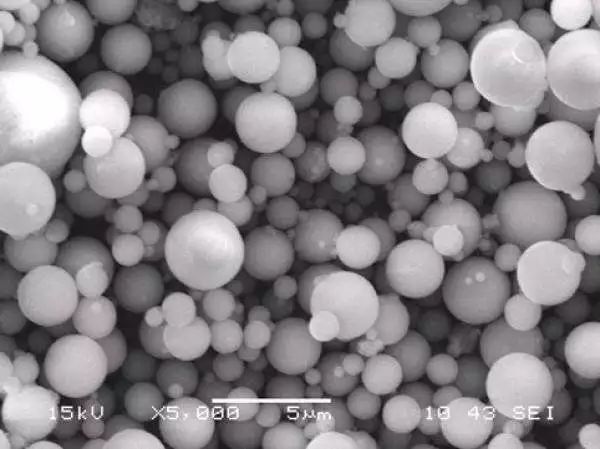Spherical quartz powder, also known as spherical silica powder, refers to the amorphous quartz powder material whose individual particles are spherical and the main component is silicon dioxide. Spherical quartz powder is mainly used for copper-clad laminates and epoxy molding compound fillers in large-scale integrated circuit packaging, and is also used in high-tech fields such as aerospace, fine chemicals, and daily cosmetics.

Why should quartz powder be spherical?
(1) The surface area of the ball is the smallest, the isotropy is good, the film is evenly stirred with the resin, the amount of resin added is small, and the fluidity is the best. The filling amount of the powder can reach the highest, and the mass ratio can reach 90.5%. Therefore, the spherical shape It means the increase of silica powder filling rate.
The higher the filling rate of silicon micropowder, the smaller the thermal expansion coefficient of the molding compound and the lower the thermal conductivity, which is closer to the thermal expansion coefficient of single crystal silicon, and the better the performance of the electronic components produced.
(2) The molding compound made of spherical powder has the smallest stress concentration and the highest strength. When the stress concentration of the molding compound of angular powder is 1, the stress of the spherical powder is only 0.6. Therefore, when the spherical powder molding compound encapsulates integrated circuit chips, the finished product The rate is high, and it is not easy to cause mechanical damage during transportation, installation and use.
(3) The friction coefficient of the spherical powder is small, and the wear on the mold is small, so that the service life of the mold is long. Compared with angular powder, it can double the service life of the mold. The price of the packaging mold of the plastic encapsulant is very high, and some need to be imported. This is also very important for the packaging factory to reduce costs and improve economic benefits.
(4) Microsilica powder itself has the effect of strengthening epoxy resin, and spherical powder can enhance this function.
Preparation Technology of Spherical Quartz Powder
The preparation methods of spherical quartz powder mainly include flame melting method, plasma heating furnace method, chemical synthesis method, hydrolysis method and so on.
(1) flame melting method
The key to this technology is that the heating device requires a stable temperature field, easy to adjust the temperature range and no secondary pollution to the quartz powder.
The principle of ball formation is: the high temperature flame spray gun sprays a high temperature flame of 1600-2000 ℃, when the powder enters the high temperature flame zone, its angular surface absorbs heat and becomes molten, and the heat is further transferred to the inside of the powder, and the powder particles are completely In a molten state. Under the effect of surface tension, the object always tends to a stable state, and the spherical shape is the most stable state, so as to achieve the purpose of forming the product into a ball.
(2) Plasma heating furnace method
The high-frequency plasma melting method is used to prepare spherical quartz powder, which has moderate temperature range, stable control, high output and high spheroidization rate, so it is a more suitable production method. Its principle and process are similar to the flame melting method, mainly changing the high-temperature heat source into a plasma generator.
(3) Chemical synthesis method
At a certain temperature, the silica sol emulsion is treated with ammonia or ammonium bicarbonate to obtain a spherical gel, and then the gel is treated with an acid to obtain a hydrated spherical silica, and then refined and heat-treated to obtain a spherical silica powder that meets the requirements. It is characterized by low uranium content, and the disadvantage is that the product is easy to agglomerate.
(4) Hydrolysis method
Add liquid SiCl4 at a constant speed to deionized water with different dispersants, and at the same time stir the hydrolyzate at high speed with a quartz rod. After drying and dehydrating to constant weight in a constant temperature box, transfer it to a high-temperature sintering furnace, perform high-temperature sintering dehydroxylation and crystal form conversion at different temperatures, and obtain high-purity spherical quartz powder with the required particle size after grinding and sieving .
